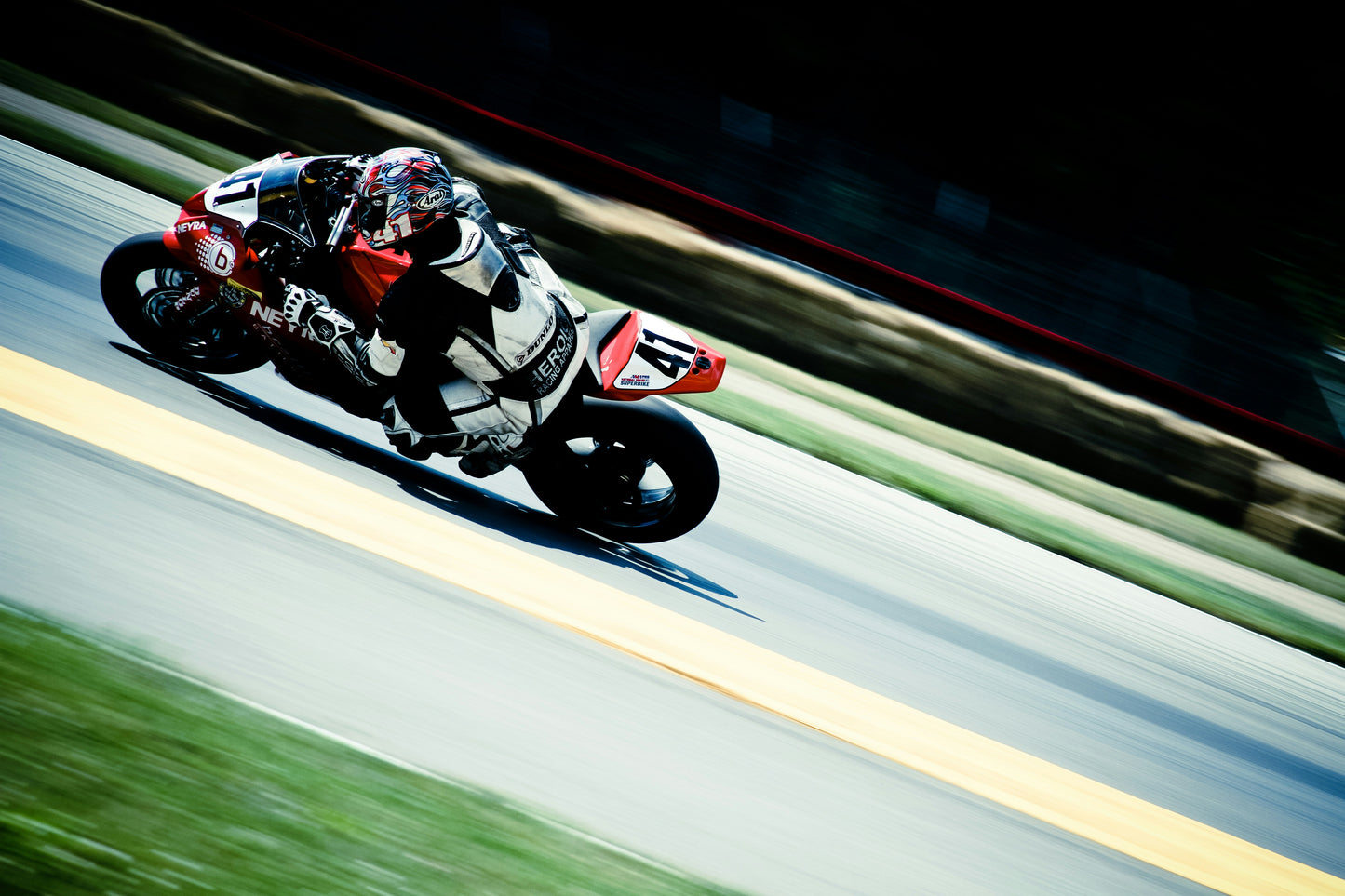Owzat Games
International Road Racing
International Road Racing
Couldn't load pickup availability
INTRODUCTION
In many ways International Motor Cycling racing is similar to Grand Prix Motor Racing. The increasing importance of tyre compounds and aerodynamics, the constitution of the World championship, the need for big money sponsorship (although motor cycling still has boasts a few privateers at the top levels today), even some of the circuits used are common to both sports. In game design terms it is the differences that are important.
The most important difference is the comparative ease with which motor cycle riders pass and re pass each other as they circulate in closely bunched groups, in strict contrast to the difficulty experienced by motor racing drivers who find passing a problem at even the most favourable parts of a circuit and impossible elsewhere. This needs to be built into the system if the simulation is to feel comfortable in use. In ˜International Road Racing" this is achieved by the use of Race Progress Cards on which the rider pieces are placed. Several riders will ˜collect" on each Race Progress Card, the events of each lap will see some riders gaining an advantage and moving forward to the next higher numbered card, others falling back to the Card behind, while yet others will retain their position and perhaps be joined by riders coming up through, or back down the field, thus simulating the constant jockeying for position within and between neighbouring groups.
Each Race Progress Card represents one second of time (in the early stages of the race) and at the speeds we are talking about this works out at about fifty yards of road. It is unimportant (to the riders, that is) who is actually leading in a particular group unless, of course, this is the last lap. There is a simple way of placing the riders in correct order within each group if you need to do so, for instance, for the purpose of keeping a proper Lap chart. This entails using one extra reading from the Race cards employed to regulate movement and placing the numbered pieces on the race display on the Race Progress Cards rather than in the central space. No advantage is gained by a rider thus judged to be ahead, such is the mature of the sport that all riders within a particular group will have equal chance (subject to current grading, riding mode etc.) of gaining the advantage during the next lap. For the final lap slightly different considerations must apply, for now the riders will be racing for real and the better riders (those with higher SK (skill) Rating) will have an advantage in a close finish.
Pit stops are, of course, out in motor cycle racing With races lasting between 30 and 45 minutes, only all but the briefest visit to the pits means the end to any hopes of finishing amongst the Championship Points. Tyre changes, which delay motor grand prix drivers for 15 to 20 seconds, would take at least double that time for the two wheelers and so tyres are simply not changed. That is not to say that tyres do not wear, they do of course and as the race progresses handling becomes more difficult and unintentional power slides and snaking under violent acceleration add vital split seconds to lap times. By the same token minor mechanical problems have to be borne philosophically and a lowered performance accepted, or a ˜mechanical failure" retirement posted. In game terms these features are provided for by an initial Tyre Allowance which is ˜worn away" until zero is reached, at which point" no charging" is allowed and any further wear results in retirement. On the mechanical side each mechanical Wear point suffered requires a roll on the Mechanical Wear Table with an increasing chance of a substantial reduction in Grading or retirement.
The final difference is a marginal one. Even in these times of works machines and escalating race budgets there still seems to be just a little more room for an individual's flair to prove decisive than in motor racing. Perhaps because more motor cycle races are won and lost on the last lap, the last corner even, that individual skill factor must be reflected in two separate ways.
Firstly, every rider who scored at least one point in the World Championship (in each class) is given an Overall Rating applicable for the whole season. This is converted into a Race Rating (valid only for a single race) as the result of the Official Practice procedure. This Race Rating in turn can be used to establish his best practice time (for forming the Starting Grid) and converted to a Grading. The Grading, which can be reduced during the race by mechanical Wear and/or increased by ˜Smooth Riding" is the yardstick by which movement from one Race Progress Card to another is measured, a rider with a Grading of 9 will have a slightly better chance of improving his position each lap than a rider with an 8 Grading. In addition every rider is given an SK (skill) Rating which as already explained, effects his prospects in a close race for the line but is also used if the Spill Chart is consulted, the better riders having more chance of avoiding ˜situations". There is a third factor. A very minor one, the ST (Starting Ability) factor, used only at the beginning of each race and providing a slight advantage or disadvantage to those riders known to be good or bad on the grid Race Card were chosen instead of dice as the randomising factor for various reasons, but mainly because it enables the game to be played quickly and smoothly without the need to refer constantly to a mass of different Charts. Any game designed to simulate the speed and grace of motor cycle racing that does not play quickly and smoothly must surely have missed the point.
Share

